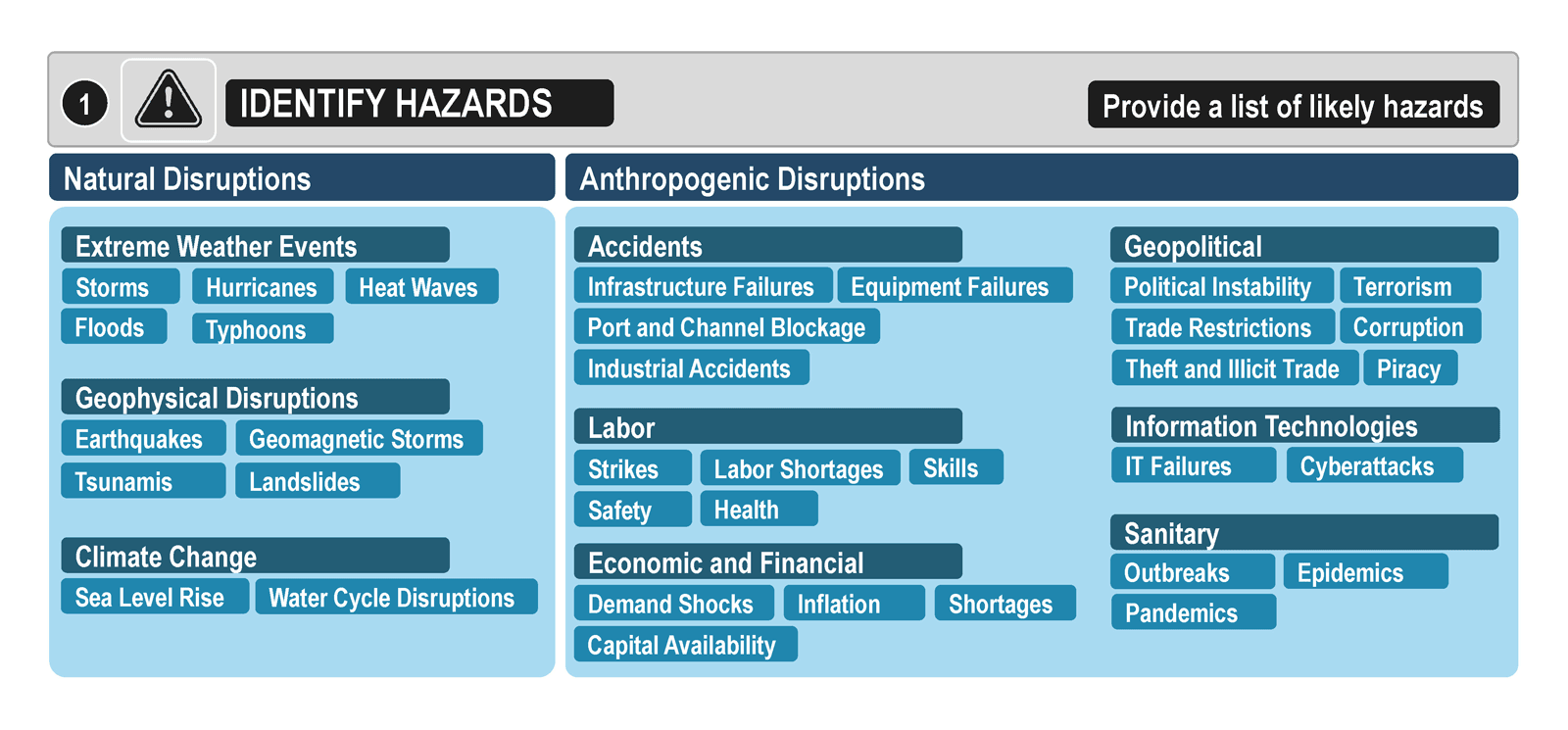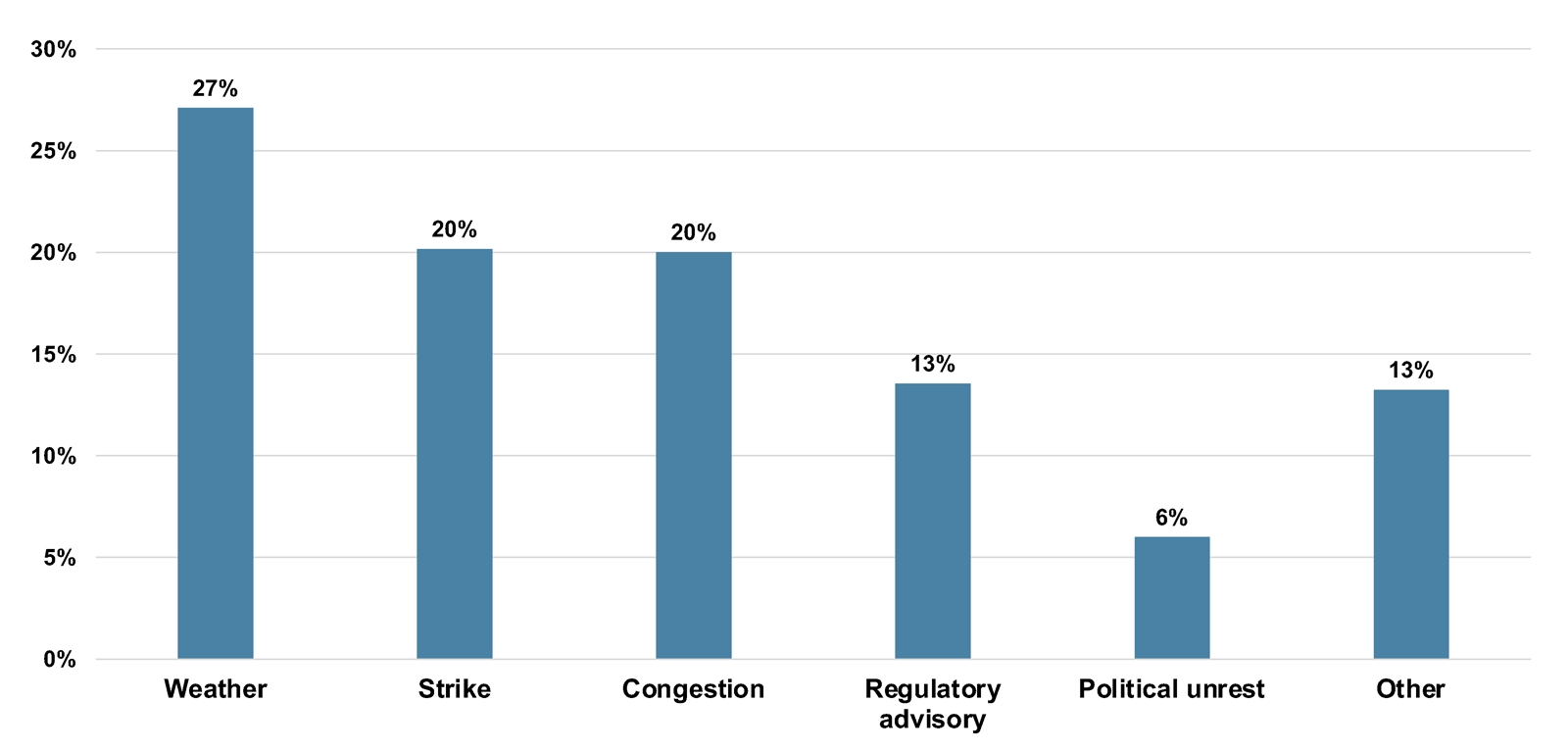The term hazard refers to the source of disruption and how extensive or damaging this disruption could be. Risk refers to the likelihood that a hazard will occur within a specified timeframe. Figure 13 provides a comprehensive but non-exhaustive list of potential hazards or sources of port disruptions. The first essential step is to establish a port resilience-building strategy. The aim is to build awareness on the hazards that have already affected the port, or could potentially occur and identify their type.
Figure 13: Step 1 – Identification of hazards impacting ports

One suitable approach to identifying hazards is to consider past experiences (the recurrence of hazards) and events that took place at similar or neighbouring ports. This helps to determine whether the port may be vulnerable, as well as to identify any future risks that may be expected, together with the likelihood for these events to occur, considering a port’s characteristics and setting. This assists a port’s management (i.e. its board and senior management) to identify the specific hazards that are the most likely to occur. In other words, port management determines the hazards that present the highest risk. Hazards that may disrupt ports can be grouped into two fundamental categories, namely natural disruptions due to:
- Extreme weather events, particularly storms, floods, typhoons and hurricanes.
- Geophysical disruptions, such as earthquakes, tsunamis and volcanic activity.
- Climate change factors, such as the compounding effect of natural and anthropogenic changes on weather systems, e.g. precipitation levels and drought. The risk of sea-level rise is particularly salient for the maritime industry.
Anthropogenic disruptions such as:
- Accidents such as equipment failure, crane breaking, containers collapsing, channel blockage, chemical leakage, explosion or fire.
- Geopolitical events, including wars, civil unrest, military coups, and sanctions.
- Labor-related issues such as strikes, labour shortages, and the lack of skills.
- Information technologies, such as IT failure and cyber-security breaches.
- Economic and financial events, such as economic cycles, insolvency of third-party suppliers and financial crises.
- Sanitary threats, such as pandemics and virus outbreaks.1
Data from Everstream Analytics shows that the main source of disruption in developing countries’ seaports are related to weather events. Figure 14 features the top six disruptions across developing countries in 2021 by share of incidents.
Figure 14: Top six port disruption sources in developing counties, 2021 (percentage of incidents)

Source: Everstream Analytics, 2021.
See PART II for a more detailed description of each of these hazards.
